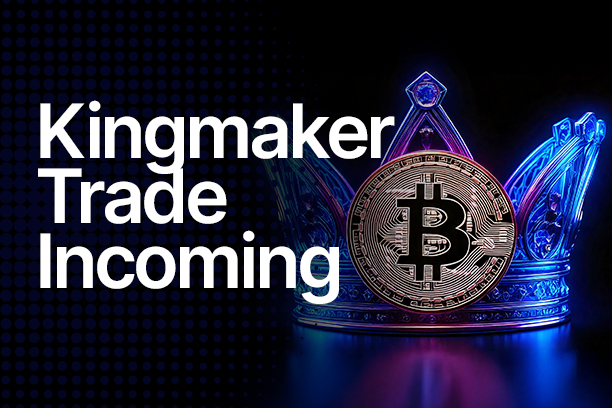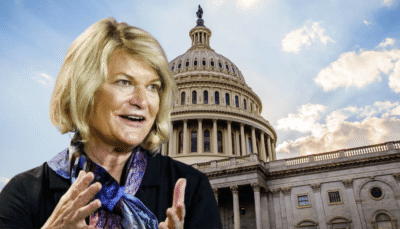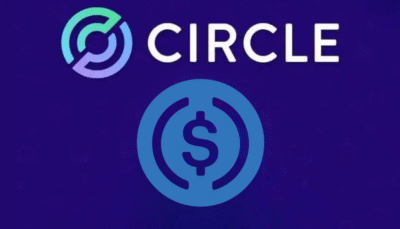The crypto market is on the edge of a major shift, and those who understand the underlying forces will be in the best position to profit. Matthias, a prominent voice in the space, has been discussing the “Kingmaker Trade”—a setup that will determine the next explosive bull run.
While retail traders remain caught in daily price swings, institutional investors quietly lay the groundwork for a massive move. Understanding the Kingmaker Trade and how to position before it happens could be the difference between securing life-changing gains or missing out entirely.
Understanding the Kingmaker Trade
At its core, the Kingmaker Trade is a two-stage event driven by institutional money and macroeconomic shifts. According to Matthias, two key conditions must be met before the next major crypto rally begins.
The first phase involves deliberately pushing the market down—a move orchestrated by the U.S. government, major financial players, and institutions. Allowing the market to decline weakens retail sentiment and creates low entry points for institutional investors, ensuring they can accumulate assets at discounted prices.
Once the market has been sufficiently suppressed, the second phase kicks in, where the Federal Reserve cuts interest rates and injects liquidity through Quantitative Easing (QE). This influx of liquidity fuels a rapid surge in risk assets like Bitcoin and Ethereum, setting the stage for a massive bull run.
Institutions don’t chase pumps like retail traders—they strategically position themselves before the rally starts.
Matthias explains: “The Kingmaker Trade isn’t just a strategy—it’s how the big players win. They don’t chase pumps; they engineer them. And if you’re not ahead of this, you’ll be left behind.“
Why Institutions Always Move Differently
Retail investors’ biggest mistake is focusing on short-term price fluctuations, often reacting emotionally to market dips, while institutions operate on a long-term strategy.
Unlike retail traders who can buy and sell instantly, institutional investors must go through months of internal approvals, risk assessments, and regulatory compliance before deploying large amounts of capital.
This means that institutions are methodically positioning themselves for long-term gains while the public sees uncertainty and indecision.
Recent data supports this institutional accumulation. In Q1 2024, inflows into digital asset funds totaled $2.3 billion, showing that large investors were quietly buying Bitcoin despite overall market uncertainty.
Meanwhile, Bitcoin ETFs launched by BlackRock and Fidelity have already attracted over $10 billion in assets, demonstrating a strong demand for regulated exposure to crypto.
Historically, Bitcoin has rallied an average of 220% in the 12 months following a Federal Reserve rate cut, highlighting how macroeconomic conditions drive institutional investment cycles.
Additionally, a report by Ark Invest revealed that over 70% of Bitcoin’s supply is now held by long-term investors, further reinforcing the idea that big players are accumulating while retail traders panic.
Institutions are not interested in short-term price swings; they are setting up for an engineered rally. They understand that Bitcoin and other digital assets will experience significant price appreciation once interest rates decline and liquidity increases.

Interest Rates & QE are Crypto Catalysts
The Federal Reserve’s monetary policy plays a crucial role in shaping the crypto market, as interest rate decisions directly impact liquidity and risk appetite.
When interest rates are high, borrowing becomes expensive, making investors hesitant to allocate capital to risk assets like Bitcoin and Ethereum.
As a result, crypto markets tend to struggle, with reduced trading volumes and lower inflows from institutional players. However, once the Fed begins lowering rates, liquidity floods back into high-growth assets, triggering major rallies across the financial markets.
Recent data suggests that the Fed expanded its balance sheet by $300 billion in March 2024, signaling the early stages of monetary easing. This comes after a similar expansion in 2020, which preceded Bitcoin’s surge from $10,000 to over $60,000 in less than a year.
According to CME FedWatch, the market is now pricing in a 70% probability of rate cuts by Q4 2024, increasing the likelihood of significant capital inflows into crypto. Historically, Bitcoin has responded aggressively to monetary easing—data from Messari shows that in the 12 months following previous Fed rate cuts, Bitcoin has delivered an average return of 220%.
Further reinforcing this trend, institutional adoption continues to grow. BlackRock’s iShares Bitcoin ETF (IBIT) surpasses $15 billion in assets under management in just a few months, indicating strong demand from institutional investors despite current macroeconomic uncertainty.
If the Federal Reserve follows through with rate cuts and reintroduces liquidity, crypto prices could skyrocket, mirroring the 2020-2021 bull run.
Matthias comments: “We’re about to see a flood of liquidity, and when that happens, crypto will react the way it always does—parabolically.”
Matthias Advised to Position Yourself
Since big players are already setting up, it is time to prepare for the next major crypto rally. Retail investors who understand how institutions position themselves can gain a strategic advantage. The first step is to focus on blue-chip crypto assets, as institutions prioritize Bitcoin and Ethereum over speculative altcoins.
During the 2017 and 2021 bull market cycles, Bitcoin outperformed 90% of altcoins in the early phases, proving that major assets lead the way before the rest of the market follows. Institutional crypto funds allocate over 80% of their capital to BTC and ETH, indicating that smart money flows into these assets first, making them the safest long-term investments in the crypto space.
Tracking institutional buying activity is another critical factor in positioning before the Kingmaker Trade unfolds. Bitcoin ETF inflows have already surpassed $10 billion, showing that institutions are accumulating despite market uncertainty.
Additionally, on-chain data reveals that Bitcoin “whales”—wallets holding large amounts of BTC—have steadily increased their holdings, indicating that institutions are preparing for the next market cycle. Monitoring net inflows into ETFs, hedge fund reports, and regulatory approvals provides insight into when institutional investors fully commit to the market.
Finally, patience is key in navigating the crypto market. Many retail traders panic-sell during dips, while institutions use these corrections to accumulate lower-priced assets.
Market cycles repeat historically, and institutions wait for the right macroeconomic conditions, such as interest rate cuts and liquidity injections, before deploying massive capital. Those who ignore short-term noise and align their strategy with institutional behavior will be in the best position to capitalize on the upcoming rally.
Kingmaker Trade Is Inevitable
The Kingmaker Trade is coming, and smart money is already positioning itself. The market is currently in its “accumulation phase,” where retail fear allows institutions to buy at lower prices. The rally will begin once the Federal Reserve eases monetary policy and interest rates drop.
History has proven that massive liquidity injections lead to explosive crypto gains. Those who understand this dynamic and position themselves accordingly will be the biggest winners.
The real question is: Will you be ready when the Kingmaker Trade unfolds?





